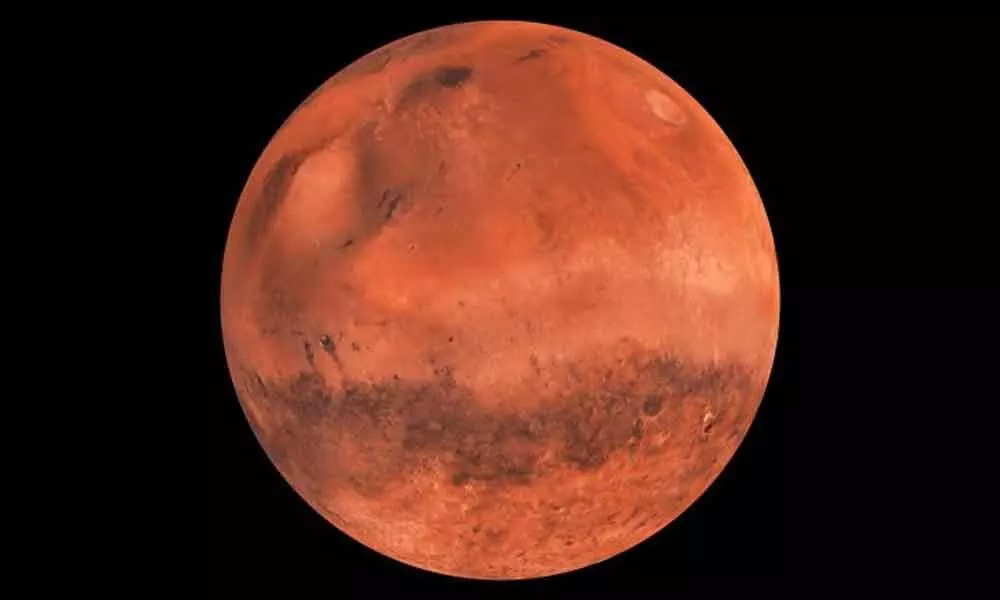Ancient meteorite site on Earth could reveal new clues about Mars' past

Scientists have devised new analytical tools to break down the enigmatic history of Mars' atmosphere and whether life was once possible there.
Scientists have devised new analytical tools to break down the enigmatic history of Mars' atmosphere and whether life was once possible there.
The paper detailing the work was published in the journal Science Advances. It could help astrobiologists understand the alkalinity, pH and nitrogen content of ancient waters on Mars, and by extension, the carbon dioxide composition of the planet's ancient atmosphere.
Mars of today is too cold to have liquid water on its surface, a requirement for hosting life as we know it.
"The question that drives our interests is not whether there's life on present-day Mars," said Tim Lyons, distinguished professor of biogeochemistry at the University of California, Riverside (UCR).
Lyon further stated, "We are driven instead by asking whether there was life on Mars billions of years ago, which seems significantly more likely."
"However, overwhelming evidence exists that Mars had liquid water oceans roughly four billion years ago," Lyons said.
The central question astrobiologists ask is how that was possible. The red planet is farther from the sun than Earth is, and billions of years ago, the sun-generated less heat than it does today.
"To have made the planet warm enough for liquid surface water, its atmosphere would likely have needed an immense amount of greenhouse gas, carbon dioxide specifically," explained Chris Tino, a UCR graduate student and co-first author of the paper along with Eva Stueken, a lecturer at the University of St. Andrews in Scotland.
Since sampling Mars' atmosphere from billions of years ago to learn its carbon dioxide content is impossible, the team concluded that a site on Earth whose geology and chemistry bear similarities to the Martian surface might provide some of the missing pieces. They found it in southern Germany's Nordlinger Ries crater.
The Mars 2020 rover will land in a similarly structured, well-preserved ancient crater. Both places featured liquid water in their distant past, making their chemical compositions comparable. According to Tino, it is unlikely that ancient Mars had enough oxygen to have hosted complex life forms like humans or animals.
However, some microorganisms could have survived if ancient Martian water had both a neutral pH level and was highly alkaline. Those conditions imply sufficient carbon dioxide in the atmosphere -- perhaps thousands of times more than what surrounds Earth today -- to warm the planet and make liquid water possible.



















